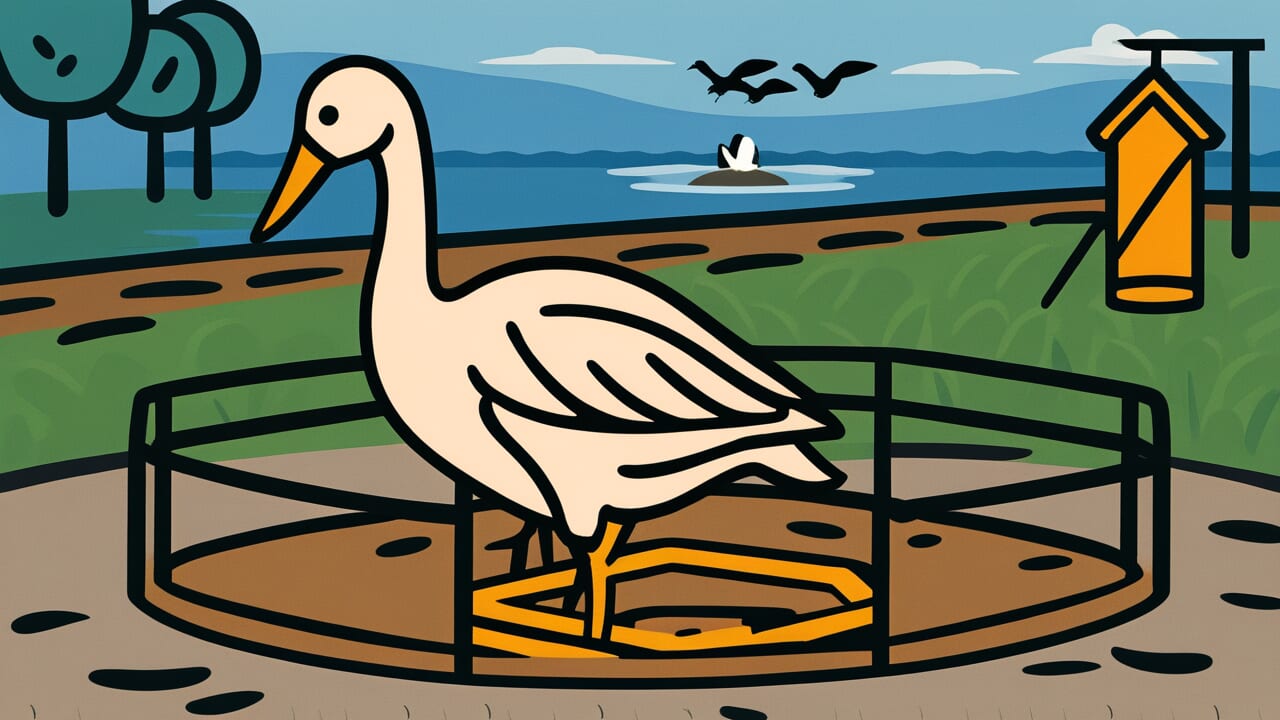How to Read “A crane in a trap set for geese”
gan toru wana ni tsuru
Meaning of “A crane in a trap set for geese”
“A crane in a trap set for geese” describes making overly elaborate preparations that don’t match your actual goal.
It depicts a situation where something much bigger and more valuable appears in a simple trap meant for small prey.
People use this proverb when preparations or methods don’t match the purpose.
However, it doesn’t mean your preparations are insufficient. Instead, it points out when preparations are excessive or mismatched.
The phrase carries a slightly ironic tone. It describes situations like preparing big equipment for a simple task or setting up elaborate plans for an easy opponent.
Today, people use it in business and daily life when effort or resources aren’t allocated properly.
When pointing out that purpose and means are out of balance, this phrase clearly conveys the mismatch.
Origin and Etymology
No clear written records explain the origin of this proverb. However, the structure of the phrase offers interesting insights.
Geese and cranes are both migratory birds familiar to Japanese people. But their value differed greatly.
Geese were hunted for food since ancient times. They were common birds that arrived in flocks every autumn.
Cranes, on the other hand, were revered as symbols of good fortune. People believed they lived for a thousand years because of their elegant appearance.
Traps for catching geese were relatively simple. Hunters used nets or decoys to catch geese regularly with basic preparations.
But what if a crane got caught in that trap? Cranes are much larger and stronger birds.
A simple trap meant for geese might catch a crane but likely couldn’t hold it. The crane would probably escape.
This contrast likely gave birth to “A crane in a trap set for geese.”
When something bigger than expected appears, the phrase expresses the absurdity or irony of inadequate preparation.
People began using it to describe such situations. It contains practical wisdom from an era when hunting culture was part of daily life.
Usage Examples
- Changing into a suit just to go to the nearby convenience store is like a crane in a trap set for geese
- Preparing executive meeting materials for a presentation to elementary students is a crane in a trap set for geese
Universal Wisdom
“A crane in a trap set for geese” contains deep insight about the gap between human preparation and reality.
Why was this phrase created and passed down through generations? Because we humans constantly seek “appropriateness” yet often lose sight of it.
When trying to achieve a goal, people sometimes put in too much effort.
In pursuing perfection, we spend time on unnecessary preparations. We misjudge the situation or opponent and respond excessively.
This shows seriousness and responsibility. But it also reveals a lack of calm judgment to see the essence of things.
This proverb teaches the importance of balance. Big goals need appropriate preparation, but small goals don’t need big preparations.
Yet people tend to forget this obvious truth. Anxiety, vanity, or habit makes us lose perspective.
Our ancestors brilliantly expressed this human tendency through the contrast between familiar birds – geese and cranes.
The teaching that wise responses match the situation continues to challenge us across time.
In our modern era that values efficiency and rationality, this phrase carries even more weight.
When AI Hears This
From an ecological perspective, geese and cranes have significantly overlapping “living spaces” for feeding and resting.
They behave similarly in similar places. So they both get caught in the same traps, which are “negative resources.”
This is exactly what ecology calls “niche overlap.”
What’s interesting is that this overlap produces unexpected results for the person who set the trap.
A crane getting caught in a trap set for geese should be a low-probability event. Crane populations are much smaller than geese populations.
For example, if a wetland has 100 geese and 5 cranes, simple calculation suggests about 95 percent of trapped birds would be geese and 5 percent cranes.
Yet rare cranes do get caught in traps. This contradicts the general rule that “rarer species are more cautious.”
The likely reason is that cranes blend into goose flocks and depend on group safety. This lowers their individual vigilance.
When niches overlap too much, rare species get pulled into majority behavior patterns. They face risks they could normally avoid.
This phenomenon shows a probabilistic reversal where a targeted system captures something unintentionally valuable.
Lessons for Today
This proverb teaches modern people the importance of recognizing “just right.”
Modern society sometimes treats perfectionism and excessive preparation as virtues. But what we really need is appropriate response to each situation.
When you work on something now, do you clearly see your purpose?
Are you booking fancy restaurants for casual lunches with friends? Are you spending days creating materials for simple reports?
Of course, careful preparation is wonderful. But when purpose and means fall out of balance, you waste time and energy.
What matters is first clarifying your purpose. What do you want to achieve? Who is your audience? What level of results is required?
Calmly assess these questions, then make necessary and sufficient preparations.
Once you develop this habit, your life becomes more efficient and relaxed.
Don’t aim for perfection. Aim for appropriateness. This flexible attitude is the wisdom for living in modern times.



Comments